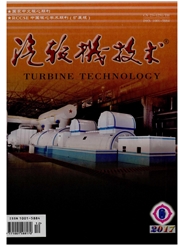

 中文摘要:
中文摘要:
速度系数是衡量喷嘴内能量损失大小的一个指标。根据喷嘴速度系数的定义,指出其与能量损失系数和总压损失系数的关系,得出喷嘴速度系数的计算方法,喷嘴前后压比一定时,喷嘴速度系数随总压损失系数的增大而减小,并探寻影响喷嘴速度系数的影响因素。喷嘴速度系数除了与喷嘴的几何尺寸、流道形状有关外,还与喷嘴前后压比、叶片表面粗糙度、多变指数及马赫数有关。借助于Fluent商业软件,模拟喷嘴前后压比和表面粗糙度对喷嘴速度系数的影响,结果表明:当喷嘴前后压比一定时,喷嘴速度系数随表面粗糙度的增加而降低,且当表面粗糙度增加到一定程度时,喷嘴速度系数基本不变;且喷嘴速度系数受表面粗糙度的影响大于喷嘴前后压比。
 英文摘要:
英文摘要:
Nozzle velocity factor is an indicator of measuring nozzle energy loss. Based on the definition of the nozzle velocity coefficient, we can point out that with the energy loss coefficient and the relationship between the total pressure loss coefficient,it is concluded that the calculation method of nozzle velocity coefficient. When nozzle pressure ratio is a constant, nozzle velocity coefficient changes over the total pressure loss coefficient. And we explore the influence factors of influence on the speed of nozzle coefficient. Except nozzle geometry size and flow shape of nozzle, nozzle velocity coefficient have a relationship with nozzle pressure ratio, surface roughness, polytropic index, and Mach number. Using the Fluent software, we simulate the nozzle velocity influenced by the nozzle pressure ratio and surface roughness. The results show that when nozzle pressure ratio is a constant,the nozzle velocity coefficient decreases with the increase of surface roughness, and surface roughness increases to a certain, the nozzle velocity coefficient becomes unchangeably. And the nozzle velocity coefficient influenced by surface roughness more.
 同期刊论文项目
同期刊论文项目
 同项目期刊论文
同项目期刊论文
 期刊信息
期刊信息
